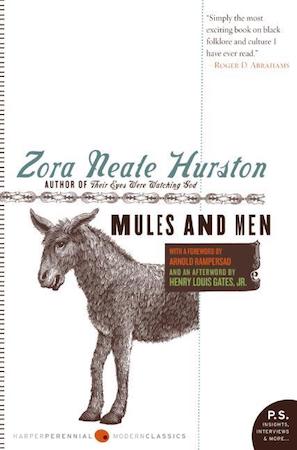Electric Lit relies on contributions from our readers to help make literature more exciting, relevant, and inclusive. Please support our work by becoming a member today, or making a one-time donation here.
.
First, a few key terms. Patriarchy is not, at the end of the day, defined by the gender of one’s leaders. It’s a societal model based on the rigid binaries and hierarchies necessary to divide, conquer, and control—e.g., men over women, men over nature, straight and cis over queer and trans, rich over poor, and, often, white over Black and Brown. Magic is energy moved with the intention of transforming reality. Therefore, for our purposes, #HexingThePatriarchy is channeling energy to dismantle this hierarchical world order and then cast a new, freer world.
In An American Covenant, I set out to do my own small part in this large-scale quest by telling the stories of five powerful feminist mystics over three centuries who helped transform America—though by and large we’ve forgotten their names. It’s a story about resistance. It’s a story about power, control, and freedom. It’s also a story about a slight blonde lesbian in her mid-30s seeking transcendence while navigating personal and cosmic chaos—me.
In most American mystic traditions, the natural world, including each and every one of us, stands as divine as anything on high in the sky. This belief has long beget radical notions of the equal right of all to a decent life here on earth—regardless of race, gender, profession, etc. This, of course, has the bonus of dovetailing nicely with our nation’s founding words. However, this alternate spiritual basis for the American experiment threatens the patriarchal powers that be by empowering all those they seek to control. And so, once we could no longer acceptably burn (or hang) feminist mystics, we were taught to mock them and their oft mainstream traditions into a spectral historical footnote. This book aims to help #HexThePatriarchy by pulling five of our feminist mystic leaders back into the direct light of herstory and their rightful place as American (s)heroes.
Below, I’ve included eight other books that aim to stick a flaming pebble in the spokes of the patriarchal machine—as eight connotes new beginnings and new societal orders. Some of the books are fiction, some non-fiction. Many emerged during, and are evocative of, a major wave of American feminism. Others explore a mystic or mystic tradition discussed in my book. All can help us recognize and touch the divine, mystic spark deep within so we can keep up the fight for however long it takes to win it.
Mules and Men by Zora Neal Hurston
In the late 1920s, Zora Neal Hurston, then a leading light of the Harlem Renaissance, headed South to New Orleans and her “native village” of Eatonville, Florida, on a mission to create the first great anthology of African American myths, rituals, and songs. The result was Mules and Men—a book chock full of poetic resistance to the patriarchal powers that be.
In my personal favorite section, Zora meets Luke Turner, who attests he is the nephew of New Orleans greatest Voodoo Queen, Marie Laveau. Zora then apprentices with Luke, learning his and Marie’s Hoodoo ways. She also learns of Marie Laveau’s true legacy, nearly lost to history—that she served as a symbol of liberation to people of color throughout New Orleans, both in life and after her 1881 death. Or as Luke put it:
“Time went around pointing out what God had already made. Moses had seen the Burning Bush. Solomon by magic knowed all wisdom. And Marie Laveau was a woman in New Orleans.”
Radical Spirits by Ann Braude
In the late 1850s, up to 10% of the American free adult populace adhered to Spiritualism in some form or fashion. This mystic movement is rooted in ideals of equality and spiritual autonomy, eschewing biblically ordained hierarchies of gender, race, and class. Many early suffragists were Spiritualists—and nearly all Spiritualists supported women’s suffrage. Spiritualism’s popularity, therefore, helped fuel the spread of this “radical” notion, that women deserved the vote, across the nation. Plus, more oft than not, women served as mediums and the de facto heads of this largely headless movement. Braude’s book, which came out in 1989, was among the—if not the—first to chronicle Spiritualism’s pivotal role in giving 19th-century women a public political and social voice. It’s a fascinating read that lends a new mystic lens to American progressive culture and politics.
The Illness Lesson by Clare Beams
In the late 1800s, the American male medical establishment coined the term “mediomania,” in an effort to link insanity to Spiritualism, and cut down the threat to the patriarchal order. They then redefined insanity’s symptoms as the most common side effects of entrancement—rigidity, seizure, ecstasy. Eventually, they settled on the more widely employed “hysteria,” derived from the Greek hystera, meaning uterus.
Beams riveting slow burn of a novel tells a story of “teenage hysteria” set in 1871 in New England. The prose is so thick with mystic symbols and smoldering repression that it reads like a startlingly lucid dream or nightmare—one that explores how, even when well meaning, the male medical and philosophical establishments can hex a woman by convincing her that her flawed, weak body, not the strict limits society puts on her, are responsible for her ills. It also poignantly expresses the power of pulling back that curtain and seeing the truth: you are strong.
The Spiral Dance by Starhawk
In this second-wave feminist mystic classic, Starhawk codifies her nature-loving withcraft tradition, called Reclaiming, and her ideas on how the Craft can realign energy towards social justice. She also presents a potent book of spells, all helpful for dismantling the patriarchy, and her own take on the feminist legend that, circa 3,000 BCE, war and its Gods emerged to snuff out ancient matriarchies. Humanity, the story goes, then replaced that matriarchal order based on equality and personal autonomy with one of rigid hierarchical control. I’d say she stands as the high theologian of the Feminist Craft (though she’d probably not like my hierarchical terminology).
Circe by Madeline Miller
One’s cultural myths should reflect the values one holds most sacred, as our myths shape our psyches and life choices—even if we don’t think they do. However, most Western myths, told only from the perspective of white men, do not reflect the values I hold most sacred. And many of these myths began with the Greeks. In Circe, Madeline Miller recasts these archetypal tales through the gaze of the witch Circe, revealing the bombastic brittleness that always undergirded the patriarchal originals equating brutality with valor and narcissism with honor.
The Fifth Season by N.K. Jemisin
In addition to recasting old myths, forging new but equally resonant ones can help shift how we perceive and therefore construct our world. In this, the first book in her Broken Earth trilogy, N.K. Jemisin reflects our own more lamentable values back to us via her mythic land, called the Stillness, where the earth is a violent father, not a nurturing mother, and the only way to survive seems to be to cling to a rigid cast system. By the end of the book, this belief is not just revealed as an illusion, but something far more sinister in this tale of how, exactly, the Stillness came to seem bent on destroying itself.

Revolution from Within by Gloria Steinem
In the 1970s, many “second”-wave feminists believed if they changed the laws limiting women’s standing in society, the revolution would follow. By the 1990s and the “third” wave of American feminism, it had grown clarion it was a much longer game. In this incredibly well-researched book published in 1992, Gloria Steinem, the most famous of second-wavers, chronicles how to dismantle the carefully constructed muzzle the patriarchy puts on all of our “inner voices”—be we men, women, or in-between and beyond. She then provides historic and personal anecdotes demonstrating that, so freed, this inner-voice—often mystically referred to as a light—alters a person, makes them far less willing to accept powerlessness and near-impossible to control.
Wide Sargasso Sea by Jean Rhys
After I finished writing An American Covenant and pondering mystic journeys through my unconscious mind, I took a deep dive into French feminist psychoanalytic theory. From these thinkers, I learned how “the phallic order” employs many tools to dominate our minds. A clutch one is an over-reliance on highly linear narrative structures that confine our thinking to strictly prescribed, rationale boxes—cutting off access to all that lies beneath this mental veneer.
Wide Sargasso Sea undermines that “phallic order” through its meandering impressionistic narrative style redolent with natural imagery and inner emotional states. It also undermines it via the plot itself. Rhys recasts Jane Eyre’s crazy woman in the attic into her protagonist and that classic 19th-century British novel into a mid-20th century anti-colonial, feminist treatise. The madwoman, Antoinette, is, in Rhys’ telling, a young Creole heiress married off to a broke but British—and therefore socially desirable—Mr. Rochester. From the early days of her Jamaican youth, Antoinette’s life is defined by the patriarchy’s urge to violently expunge in others all its been told is abject in itself. They may call you insane. They may call you uncivilized. They may call you Satanic. But you can, in turn, tell stories that hex them right back—and free us all in the process.








